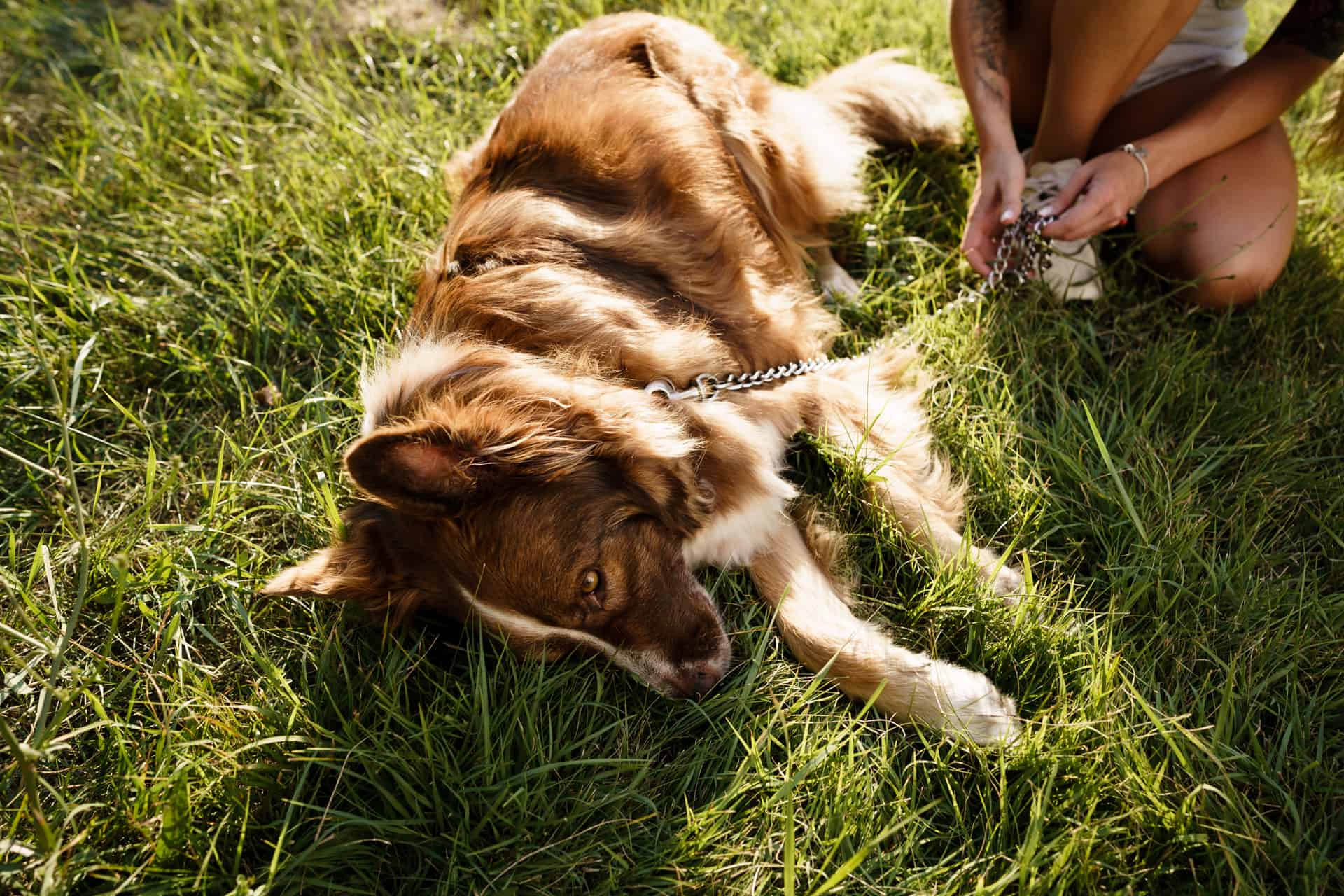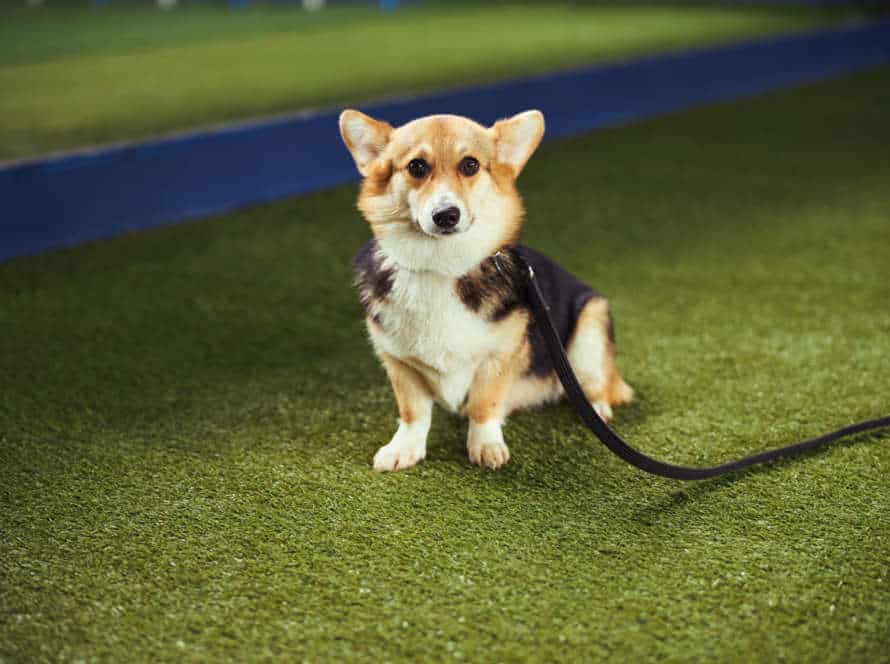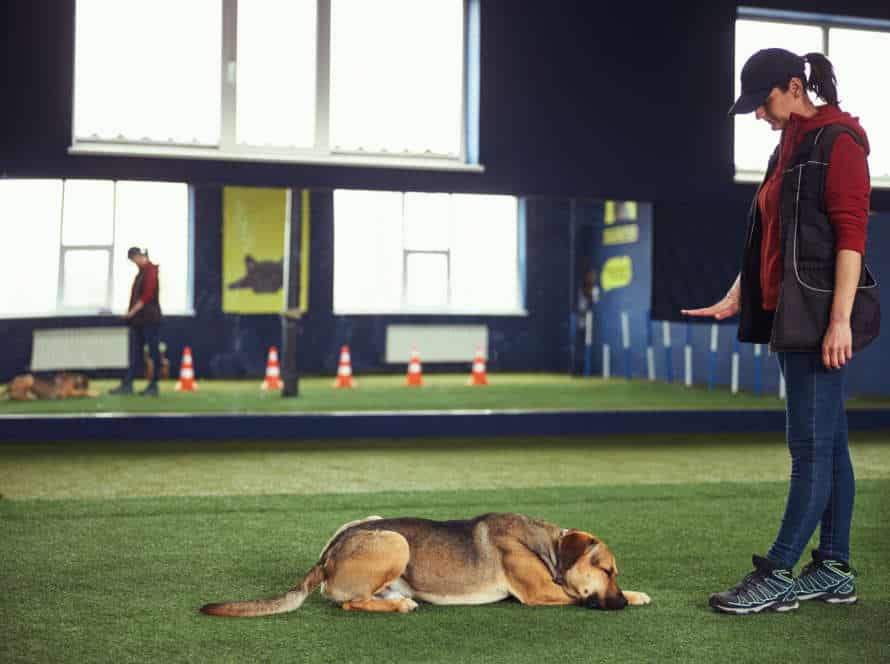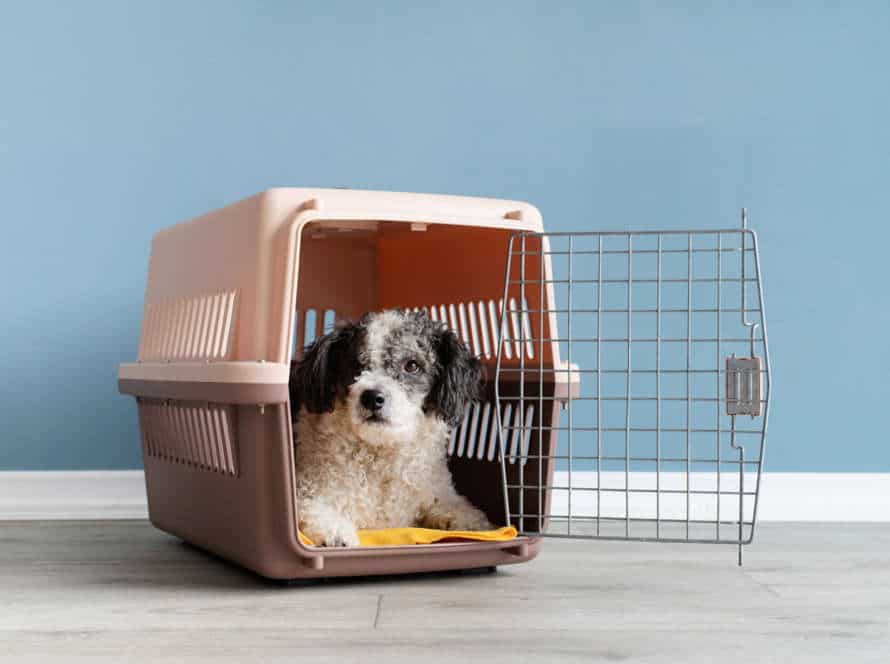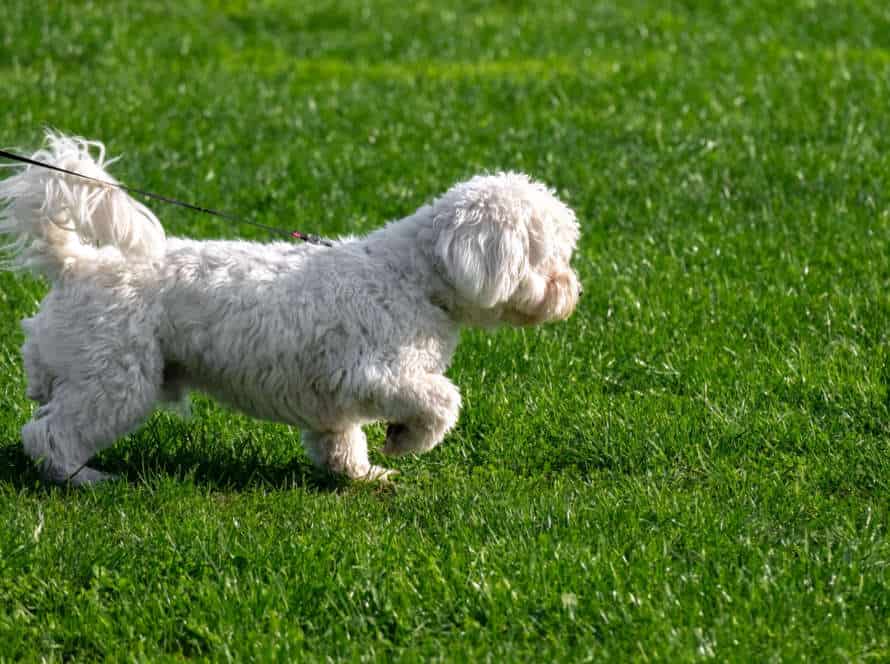Training Techniques to Prevent and Address Leash Biting
Leash biting is a common problem in dogs, but it can be prevented and addressed. Try these techniques:
- Use a taste deterrent spray or bitter apple on the leash.
- Play tug of war with your dog before a walk.
- Teach the “leave it” command and use treats.
- Use a head collar or muzzle.
Pro Tip: Be consistent with training and reward positive behavior. Your dog will learn good behavior = positive rewards!
Understanding Leash Biting
Leash biting can be a stressful situation for pet owners, especially newcomers. To tackle this tricky habit, it is important to understand why it happens. A comprehensive solution takes into account both environmental and behavioural factors. Here, we’ll look at some training methods to prevent and manage leash biting.
Why do dogs bite their leash?
Dogs may chew their leash for different reasons, such as anxiety, frustration, or boredom. It’s important to understand why your pup is doing this and how to prevent and deal with it. This ensures the safety of both your pet and yourself.
Here’s how to train to stop leash biting:
- Teach the “Leave It” command. This helps your pup ignore the leash and pay attention to you. When they bite the leash, use the command and reward them when they obey.
- Use a shorter leash. This gives you more control and lets your pup know this behavior isn’t okay.
- Give them appropriate chew toys. This can redirect their focus and keep them mentally engaged.
- Check for underlying issues. If the leash-biting doesn’t stop, it could be a sign of more serious issues that need a vet’s help.
Remember: Consistency and patience are key. Always praise and reward them for good behavior.
Understanding your dog’s body language
Dogs use body language to communicate. As a dog owner, you need to understand this language. Leash biting is a common behavioral problem and can even be dangerous. To prevent and address this, try the following:
- Figure out why the leash biting is happening. It’s normally due to anxiety, stress or excitement.
- Keep the leash loose. Too much pressure can trigger the behavior.
- Train obedience. Teach your dog “no biting” commands and other cues to help you stay in control.
- Reward good behavior. Use positive reinforcement such as treats, praise and toys to encourage the correct behavior.
Leash biting can be prevented with training and understanding your pup’s body language.
Identifying the cause of your dog’s anxiety
Leash biting is a sign of anxiousness and frustration in dogs. To fix it, you need to find the problem’s origin. Here are some causes:
- Fear and anxiety: Dogs who are scared or distressed may bite the leash for comfort.
- Excess energy: Without enough exercise or stimulation, dogs may bite the leash to get rid of energy.
- No training: Dogs without leash training can bite out of confusion or anger.
To prevent and address this, try redirecting their behavior with toys or treats. Desensitize them to the leash. Provide lots of exercise and mental stimulation. With patience and consistency, leash biting can be fixed and improve walks for both of you!
Prevention Methods
It’s vital to take preventive measures when introducing a leash and collar to a new pup. Early training is very helpful in teaching the dog not to bite the leash. Here are some prevention methods for teaching a new dog not to bite the leash and to have good leash behaviour.
Choosing and fitting the right collar or harness
Choosing and fitting the right collar or harness is essential for leash biting prevention in dogs. Here are some tips to help:
- Consider your pup’s breed, size, and behaviour when selecting the type of collar or harness.
- Flat collars are suitable for most dogs, but not for those that pull or have respiratory problems.
- Martingale collars fit better for dogs with narrow heads that slip out of flat collars.
- Harnesses are more suitable for dogs that pull or have respiratory issues. Make sure it fits properly and does not put pressure on the neck.
- Measure your dog’s neck or chest girth to get the right size.
- Adjustable collars/harnesses should fit snugly but not too tight – there should be room for two fingers between the collar/harness and your dog’s skin.
Positive reinforcement techniques such as ignoring the behaviour, redirecting the dog’s attention, and providing exercise and mental stimulation can help prevent and address leash biting. Pro Tip: Seek help from a professional dog trainer if you are having difficulty.
Leash training from the beginning
Leash training from the start is essential for preventing and addressing leash biting in dogs. Here are some prevention methods and training techniques to help:
- Choose a comfy and sturdy leash that gives your pup enough room to move, but not too much to cause distraction or danger.
- Start with short and frequent walks. Give treats and positive reinforcement for good behavior and focus.
- Don’t pull or yank on the leash – it can agitate your dog and worsen the biting.
- Use gentle corrections like stopping, and redirecting your pup’s attention with a toy or command.
- Have a regular, predictable routine with leash training, exercises and rewards.
By following these tips, you can train your pup to walk on a leash calmly and without biting.
Practice positive reinforcement training techniques
Positive reinforcement training is an effective way to prevent and address leash-biting in dogs. Here’s what to do:
- Give your pup a high-value treat they love, as soon as you clip their leash on. This rewards good behavior and distracts them from biting.
- If they start biting while on a walk, stop and calmly ask them to sit or lie down. When they comply, give them a treat and reinforcement.
- Bring a toy they can play with during the walk. This will give them something to chew instead of the leash.
- Use consistent commands like “leave it” or “drop it” to discourage leash-biting. Reward them with praise and a treat when they stop.
- Remember to stay calm and patient – positive reinforcement takes time and consistency to work.
Addressing Leash Biting Behavior
Leash biting can be a worrisome issue for dog owners. But, with the proper training techniques, it can be taken care of effectively.
Identifying the root cause and making a plan to address it are key. Let’s check out the training techniques so we can avoid and handle leash biting.
Training commands to stop biting
If your pup bites the leash, there are methods to prevent and fix this. Here are some commands for leash biting prevention:
- “Leave it”. Hold the leash loosely and say “leave it” when they try to bite. Give a treat if they stop.
- “Drop it”. If they already bit, use the command “drop it” to release the leash.
- “Off”. Say “off” and give a treat when they obey.
With patience and treats, you can train your dog to stop biting the leash and enjoy walks. Pro tip: Use yummy treats like chicken or cheese to reward good behavior.
Corrective actions when the dog chews or bites the leash
When your dog chews or bites the leash, corrective actions should be taken. Here are some techniques to train your pup to behave on a leash and stop biting/chewing it:
- Distract them with toys & treats.
- Positively reinforce good behaviour.
- Use the ‘drop’ command.
- Exchange the leash with a toy or treat.
- Be consistent in rewarding and redirecting.
- If the issue persists, seek help from a certified dog trainer.
Pro tip: Patience & consistency are key to success.
Implement counter-conditioning techniques
Counter-conditioning is a good way to stop leash-biting behavior in your pup. It means training them to tie the leash with happy experiences, not biting or bad behavior.
Here are some tips:
- Desensitization: Put the leash near your pup and give treats and praise.
- Positive reinforcement: Give snacks, compliments, or toys for good behavior like walking calmly without biting.
- Redirecting Focus: Offer a toy or treat when they try to chew the leash, to turn their attention away from the action.
- Consistency: Stick to the same methods and don’t punish or reprimand them, as this can make bad behaviors stronger.
With patience and rewards, you can teach your pup to walk nicely on a leash without biting. This will make walks better and bring you closer to your furry friend.
Potential Pitfalls
Training your pup not to bite the leash? That can be tricky! There are some things you need to watch out for. To ensure good behaviour, you should train your pup properly. What are these potential pitfalls? Here’s a closer look at how to avoid them:
Common mistakes when training your dog
One of the biggest blunders when training your pup? Not being consistent. Consistency is vital for successful pup training – from giving commands to rewarding good behaviour.
Other pitfalls to dodge:
- Moving too quickly: Pups need time to learn and take in new information, so take it slow and be patient.
- Punishing bad behaviour: It might work in the short-term, but positive reinforcement will create long-lasting behavioural changes.
- Not socializing your pup: Socialization is essential for a well-mannered pup, so make sure to introduce them to different people, animals, and experiences.
When it comes to leash biting, it’s important to tackle it right away to stop it from becoming a habit. You can try distracting them with a toy, redirecting with treats, or using a deterrent spray. With consistency and positive reinforcement, any pup can learn to break the leash biting habit.
Overcoming setbacks and challenges during the training process
Training your dog can be tricky. Leash biting is a common problem. To prevent and address this, here are a few techniques:
- Use the correct equipment. Choose a collar or harness. Use a flat, martingale, or front-clip with a fitted leash. Avoid retractable leashes.
- Use positive reinforcement. Give verbal praise, treats, or toys when they show good behavior. Teach them ‘drop it’ to let go of the leash.
- Avoid areas that trigger leash biting. Crowds or places with new smells.
- Be patient and consistent. It takes time to overcome leash biting.
Pro tip: Consult a professional trainer for support.
Seeking professional help if needed
Leash biting can be a struggle for many dog owners. There are various techniques to try, but professional help is essential. Here are some pitfalls and how help can be useful:
- Using physical punishment is not good – it can cause fear, anxiety, and aggression.
- Inadvertently reinforcing bad behavior can happen if owners wrongly reward their dog for biting the leash.
- Inconsistent training can create confusion and frustration for dogs, making it harder to learn.
- Pro help provides expertise, personalized plans, observations, and access to special equipment. It also stops owners from making common mistakes and helps their pup succeed with leash training.
Training takes time, patience, and effort, but the right techniques and guidance can help your pup overcome leash biting.
Frequently Asked Questions
Q: Why does my dog bite the leash during walks?
A: Leash biting can be a sign of boredom, anxiety or frustration. Dogs may also do it as a way to redirect their attention from something that scares or excites them.
Q: How can I prevent my dog from biting the leash?
A: Training techniques such as providing plenty of exercise, giving your dog plenty of chew toys, redirecting their attention to something else and rewarding good behavior with treats can help prevent leash biting.
Q: What should I do if my dog bites the leash during walks?
A: You can try redirecting their attention with a toy or treat, or simply stopping the walk until they settle down. If the behavior persists, it may be a sign of a deeper problem and you should consult with a professional dog trainer.
Q: Can I use punishment to deter leash biting?
A: Punishment is not a recommended method for dealing with leash biting as it can make the behavior worse and damage the bond between you and your dog.
Q: How long does it take to train a dog to stop biting the leash?
A: The length of time it takes to train a dog not to bite the leash varies depending on the dog and the effectiveness of the training methods used. Consistent training will yield better results than sporadic effort.

